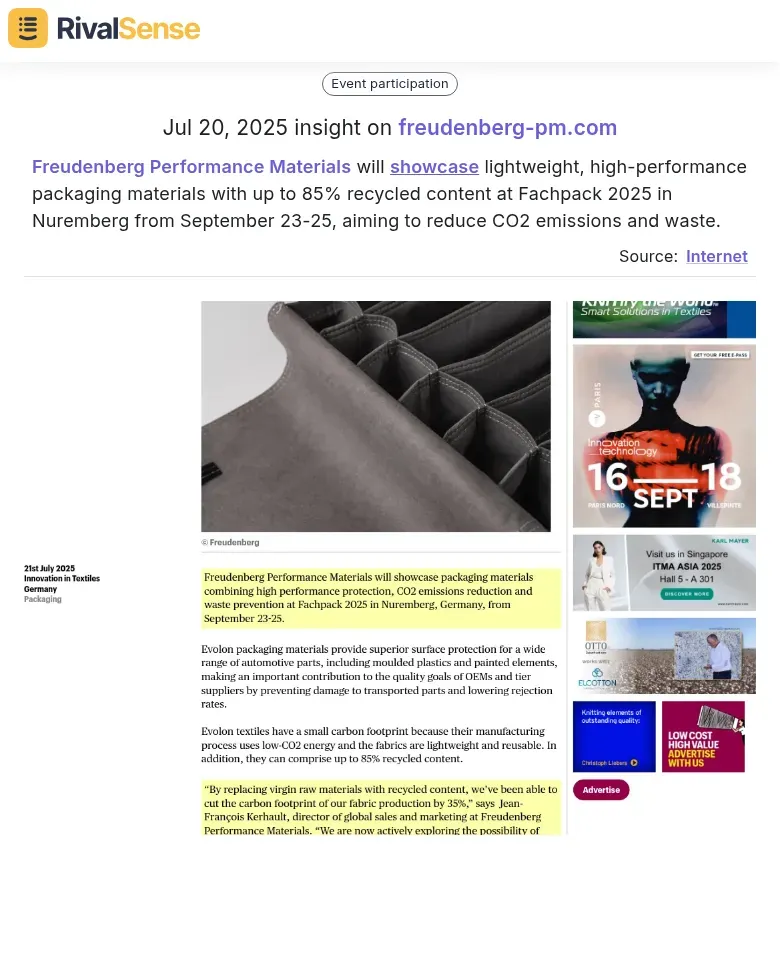Mastering HR Competitive Threat Monitoring: Frameworks, Templates & Real-World Insights
HR Competitive Threat Monitoring is a strategic approach focused on tracking competitors' human resource activities to protect your talent pipeline and business advantage. In today's talent-driven economy, companies with superior HR strategies can poach your top performers, disrupt operations, and accelerate innovation. This specialized intelligence goes beyond general market analysis to spotlight people-centric vulnerabilities and opportunities.
HR plays a critical role in maintaining competitive advantage through three key mechanisms:
- 🛡️ Talent Retention - Monitoring competitors' compensation/benefits to prevent attrition
- 🔍 Strategic Hiring - Analyzing job postings to anticipate skill demand shifts
- 💡 Culture Intelligence - Tracking employer branding to enhance your employee value proposition
Actionable Framework Setup
- Use LinkedIn Talent Insights for real-time competitor job posting analytics
- Benchmark benefits packages against industry leaders quarterly
- Create tracking metrics for:
• Turnover rates • Time-to-hire efficiency • Compensation band comparisons
Key Components of an Effective HR Competitive Threat Monitoring Framework
Building a robust monitoring system requires structured elements that deliver actionable insights. The most effective frameworks combine competitor identification, technology enablement, and measurable outcomes to turn data into strategy. Focus on these core components:
| Component | Key Actions | Tools & Techniques |
|---|---|---|
| Competitor Identification | Map direct/indirect talent competitors | Industry reports, LinkedIn analysis |
| Threat Tracking | Monitor job postings, Glassdoor reviews | RivalSense, Google Alerts, Hootsuite |
| Metrics & Analysis | Compare turnover rates, hiring velocity | Competitor matrix dashboards |
Executive movement tracking provides early signals of strategic shifts. When RivalSense detected Oussama Farid's move to DFDS as Chief Officer in Morocco, it revealed regional expansion plans competitors could anticipate in talent acquisition:

✅ Implementation Checklist
- [ ] Create competitor HR profiles with key contacts
- [ ] Automate social media monitoring for employer branding changes
- [ ] Conduct monthly talent strategy war rooms
Customizable Templates for HR Competitive Threat Monitoring
Structured templates transform scattered data into strategic assets by standardizing competitor analysis. These adaptable frameworks help track talent movements, compensation benchmarks, and culture indicators across industries. Start with core metrics like competitor job ad frequency and promotion patterns, then layer industry-specific elements.
Template Adaptation Guide:
- Identify sector-specific threats (e.g., tech skill raids, manufacturing retention)
- Add contextual metrics (remote work policies for tech, overtime patterns for logistics)
- Set update triggers (quarterly reviews + event-based updates)
📌 Real-World Applications:
- Fintech firm used layoff tracking to prevent talent poaching during market dips
- Healthcare provider benchmarked wellness programs against rivals to reduce turnover
🔧 Optimization Tips:
• Use Zapier to connect HRIS data with monitoring tools
• Assign "competitor champions" in HR team
• Color-code templates for rapid threat assessment
Implementing HR Competitive Threat Monitoring in Your Organization
Successful integration requires aligning HR intelligence with business operations through technology, training, and cross-functional collaboration. Begin by mapping existing competitive intelligence processes to HR workflows, identifying where talent insights can inform strategic decisions. Prioritize metrics that directly impact revenue and innovation capacity.
Common implementation pitfalls include siloed data and analysis paralysis. Counter these by:
⚠️ Avoiding Critical Mistakes:
- Over-monitoring irrelevant metrics (focus on 5 key indicators)
- Neglecting legal compliance (consult legal on data collection boundaries)
- Delayed action cycles (set 72-hour response protocols for critical alerts)
🎯 Deployment Roadmap:
- Integrate RivalSense with HRIS for automated competitor tracking
- Train HRBPs on intelligence interpretation workshops
- Establish marketing-HR syncs for employer branding alignment
- Develop escalation protocols for red-flag threats
- Implement quarterly framework audits
Beyond HR: How Business Moves Impact Talent Strategy
Non-HR competitive developments significantly influence talent ecosystems and require cross-functional monitoring. Sustainability initiatives, product launches, and regulatory changes affect employer branding and skill demands in measurable ways. Savvy HR leaders track these connections to anticipate talent implications.
Sustainability initiatives like Maersk's e-methanol adoption create employer branding advantages that attract ESG-focused talent. Tracking such moves helps benchmark your green credentials:

Event participation signals growth focus and skill needs. When Freudenberg announced Fachpack 2025 showcasing for recycled materials, it revealed R&D priorities impacting future hiring:

🌐 Cross-Functional Monitoring Tips:
• Partner with Product teams on launch-talent impact analysis
• Map regulatory changes to compliance hiring needs
• Correlate competitor media mentions with Glassdoor rating shifts
Conclusion and Strategic Next Steps
Proactive HR competitive monitoring transforms talent risks into strategic advantages by anticipating market shifts before they impact your workforce. Consistent implementation protects your innovation pipeline while enabling data-driven talent investments that outmaneuver competitors.
Immediate Action Plan:
- 🔎 Identify 3 priority competitors for HR tracking
- ⚙️ Configure monitoring tools with key metrics
- 📊 Establish baseline benchmarks for comparison
- 🔄 Institute monthly talent intelligence reviews
- 🎯 Align HR strategy with business objectives quarterly
Sustained Learning Resources:
- Book: The Talent War by Mike Sarraille
- Course: LinkedIn Learning's People Analytics certification
- Metric Toolkit: SHRM's Competitive HR Metrics Dashboard
Transform insights into action: Try RivalSense Free to receive your first automated competitor report today. Track HR moves, executive changes, and strategic pivots in one consolidated weekly digest.
📚 Read more
👉 Turning Competitor Expansions into Opportunities: Lessons from Tokmanni's 271-Item Cosmetics Boost
👉 Advanced Instagram Intelligence: Decoding Competitor Webinar Promotion Tactics
👉 Actionable Strategies for Retail Training Program Research
👉 Step-by-Step Guide to Tracking Competitor Hiring and Layoffs
👉 Decoding Competitor Security Moves: Sprout Social's 2FA Enforcement
